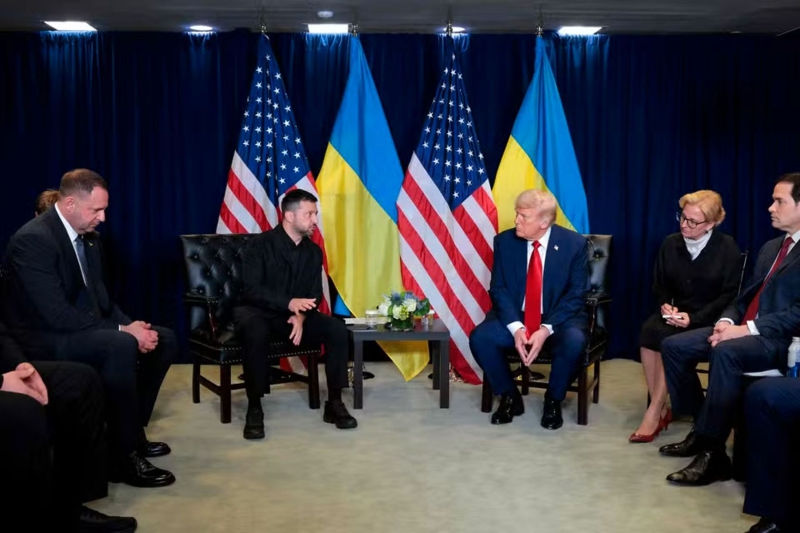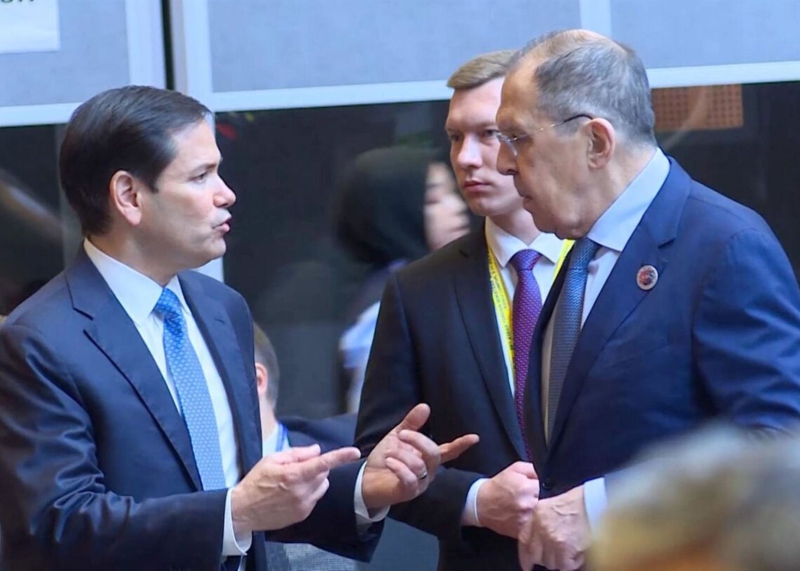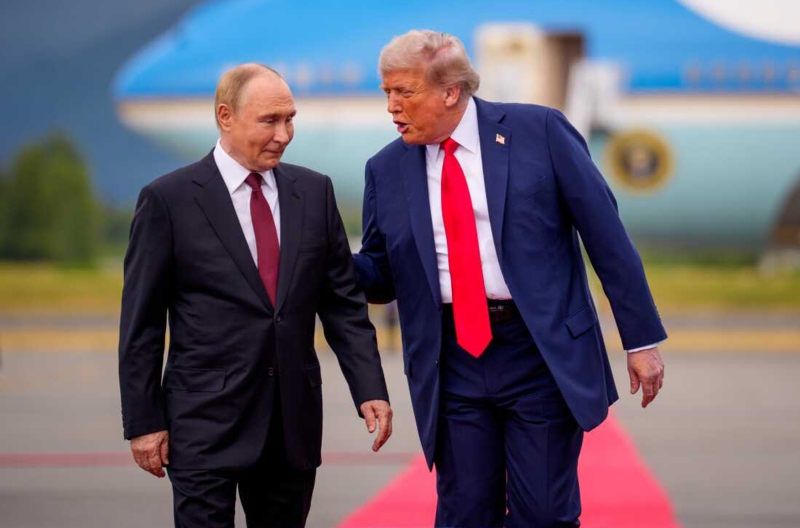When Donald Trump announced earlier this month that a summit with Vladimir Putin would be held in Budapest, European politicians were stunned. But while analysts were still debating whether the Russian dictator had once again “outplayed everyone,” the American president called off the meeting, announcing serious sanctions in its place. Frustrated that Putin, while formally agreeing to meet, refused to make any concessions, Trump seems to have run out of patience.
Some time after the largely fruitless summit in Alaska, the rhetoric of President Trump began to shift rapidly in a pro-Ukrainian direction, culminating in his statements about Russia revealing itself to be a “paper tiger” and facing economic turmoil. Meanwhile, Ukraine, he said, had a chance to restore its original borders and “perhaps even go further.” Several times, the American president announced he was open to the possibility of supplying Tomahawk missiles to the Armed Forces of Ukraine — something the Biden administration had repeatedly refused to do.
Trump’s meetings with Volodymyr Zelensky became almost a monthly occurrence: at the White House on Aug. 18, on the sidelines of the UN General Assembly on Sept. 23, and at a bilateral luncheon at the White House on Oct. 17 — even if the latter did not live up to expectations.
The Kremlin seizes the initiative
While Zelensky’s plane was en route to D.C. earlier this month, a phone conversation took place between Trump and Putin. According to Kremlin aide Yuri Ushakov, the talks were initiated by the Russian side. What exactly the two leaders discussed over the course of more than two hours remains unknown. One can only assume that Putin expressed admiration for Trump’s efforts to end the fighting in Gaza and feigned serious concern over the possible American delivery of Tomahawk missiles to Ukraine.
In reality, the number of missiles that could have been transferred to Kyiv in the foreseeable future — estimated by analysts at between 20 and 50 — was unlikely to have any significant impact on the course of the war. However, the talk surrounding the Tomahawks may have given the ambitious (and at times politically naïve) U.S. president a false sense that, building on his Middle Eastern success, he was close to brokering a peace agreement between Moscow and Kyiv as well.

Be that as it may, upon landing at Andrews Air Force Base, Volodymyr Zelensky found himself blindsided by the unpleasant news of an upcoming Trump-Putin summit in Budapest, projected at the time to take place within the next two weeks.
According to sources cited by several Western media outlets, the atmosphere of the talks between the Ukrainian and U.S. presidents more closely resembled the infamous Oval Office altercation of Feb. 28 than the friendly conversations of recent months. Reportedly, Trump lost his temper, resorted to profanity, claimed that Ukraine was headed for defeat (directly contradicting his earlier statements), and demanded further territorial concessions from Kyiv. As a result, Zelensky and Trump agreed on the need for a ceasefire based on the existing front line. The Tomahawks are not being sent.
Turning on a dime — again
It took Trump less than a week to make yet another foreign policy turn. On Oct. 21, he canceled the Budapest meeting. “It just didn’t feel right to me,” the U.S. president said. “It didn’t feel like we were going to get to the place we have to get. So I canceled it.”
A day later, he imposed sanctions on Rosneft, Lukoil, and 34 of their subsidiaries.
This move had clearly been coordinated with European partners. Immediately after the news from Washington broke, Austria dropped its remaining objections to the EU’s 19th sanctions package, allowing for its adoption on Oct. 23. The new European sanctions primarily targeted Russian payment instruments: the Mir bank cards and the Faster Payments System, the Payeer service, the ruble-backed stablecoin A7A5, as well as foreign branches and partners of several Russian banks. The package was aimed at shutting down the gray payment channels through which Russian companies and intermediaries had been transferring funds in an effort to circumvent previous sanctions.
The U.S. oil sanctions not only restrict the operations of Russia’s two oil giants, which account for more than half of the country’s oil exports, but also threaten the entire ecosystem of global trade in Russian oil.
The U.S. sanctions threaten the entire ecosystem of global trade in Russian oil
Admittedly, no sanctions can remove Russian fossil fuels from the global market entirely, and no swing producer is capable of replacing the full volume of Russian exports. No one is setting such a goal, and any attempt to do so would risk destabilizing the market and triggering a price hike (one that would only increase the demand for Russian shadow fleet oil). However, the objective of hitting the Russian state budget appears quite achievable.
The key factor is the response from the oil refineries of India and China, which currently account for about 75% of Russia’s oil export revenues. If they fail to take the current restrictions seriously enough, Trump has another card up his sleeve: secondary sanctions, which could be imposed on the counterparties of the “blacklisted” Russian companies. For now, secondary sanctions are not being introduced.
At present, India and China are signaling that they are cutting back on purchases of Russian oil — at least temporarily. Many Indian refineries have already suspended new orders for Russian crude. Meanwhile, the American president continues to insist that his goal is not to crash Russia’s economy, but to bring Putin to the table for substantive talks over a possible diplomatic solution to the war in Ukraine.
U.S. Department of State back in the game
Undoubtedly, such rapid shifts in approach toward the Kremlin are shaped by Trump’s distinctive political style. While many dismiss his geopolitical methods as amateurish, this case clearly demonstrates the professionalism of Trump’s foreign policy team. After receiving orders to prepare the Budapest meeting on short notice, the White House first examined the Kremlin’s current stance on Ukraine — both the public statements of Russian officials and the confidential communiqué requested from Moscow outlining Russia’s demands of Ukraine.
After that, a phone call took place between Secretary of State Marco Rubio and Russian Foreign Minister Sergey Lavrov. These steps led to a clear conclusion: Russia was not prepared to offer anything new and intended only to repeat its unrealistic demands. Another empty meeting with Putin would not strengthen Trump’s image as a peacemaker, and the summit was accordingly called off.

The Kremlin had likely tried to replicate its tactical success from May. This past spring, European leaders effectively issued Moscow an ultimatum: an immediate 30-day ceasefire backed up by the threat of coordinated EU and U.S. sanctions. Putin, however, easily evaded the hazard by proposing talks in Istanbul — and Trump readily took the bait. In October, however, it was Moscow that found itself wrong-footed.
Trump demands concessions
This has been most evident in the Kremlin’s erratic and contradictory actions. The hastily arranged, poorly prepared visit to the U.S. by Kremlin negotiator Kirill Dmitriev made a pitiful impression. The Russian envoy may have tempted Washington with some sort of economic proposals, but on the political front he was clearly out of his depth. He made baseless claims that Russia was “close to a diplomatic settlement” with Ukraine, he praised what he called an “important step by President Zelensky” to reach a peace agreement based on the current front line (something Zelensky and Trump had been discussing since at least early spring), he insisted that the Budapest meeting had not been canceled but merely postponed, and he even openly tried to intimidate the Americans with reference to Russia’s military capabilities.
The hasty, unprepared visit to the U.S. by Kremlin negotiator Kirill Dmitriev made a pitiful impression
At the same time, Putin threatened a “staggering” response if Ukraine were to use Tomahawks and conducted a highly visible test of the unlimited-range Burevestnik cruise missile. Simultaneously, Russian forces intensified missile and drone strikes on major Ukrainian cities that included an increasing number of direct hits on unambiguously civilian targets.
Lacking a clear plan of action, Moscow is resorting to every trick that has ever brought it short-term success. Yet none of these tactics is working anymore. “We need to be sure we’re making a deal. I’m not going to waste my time,” Trump said, outlining the prospects for a possible meeting with Putin.
And if Moscow does not wish to resume sharp confrontation with the U.S. — one that risks worsening its economic troubles while increasing the likelihood of Ukraine eventually receiving those Tomahawks — the Kremlin will have to employ a method it has yet to use in this war: making real concessions.

